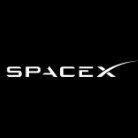Members Can Post Anonymously On This Site
Test
-
Similar Topics
-
By Space Force
A joint team of AFGSC Airmen and Vandenberg SFB Guardians launched an unarmed Minuteman III intercontinental ballistic missile equipped with a single telemetered joint test assembly re-entry vehicle from Vandenberg SFB.
View the full article
-
By NASA
1 min read
Preparations for Next Moonwalk Simulations Underway (and Underwater)
A still image of a video that shows a plastic rod and cotton-fiberglass fabric being burned during a ground test of the Lunar-g Combustion Investigation (LUCI) experiment.Credit: Voyager Technologies An experiment studying how solid materials catch fire and burn in the Moon’s gravity was launched on Blue Origin’s New Shepard suborbital flight this month.
Developed by NASA’s Glenn Research Center in Cleveland together with Voyager Technologies, the Lunar-g Combustion Investigation (LUCI) will help researchers determine if conditions on the Moon – with reduced gravity – might be a more hazardous environment for fire safety.
The video shows a plastic rod and cotton-fiberglass fabric being burned during a ground test of the Lunar-g Combustion Investigation (LUCI) experiment. Scientists will compare the ground test video to the video recorded on the Blue Origin flight.
Credit: Voyager Technologies On this flight, LUCI tested flammability of cotton-fiberglass fabric and plastic rods, and once launched, the payload capsule rotated at a speed to simulate lunar gravity. NASA Glenn researchers will analyze data post-flight.
A plastic rod and cotton-fiberglass fabric that were burned during testing for the Lunar-g Combustion Investigation. New, unburned samples were lit on fire during the flight. Credit: Voyager Technologies LUCI’s findings will help NASA and its partners design safe spacecraft and spacesuits for future Moon and Mars missions.
For more information on LUCI and the mission, visit.
Return to Newsletter View the full article
-
Check out these Videos





Recommended Posts
Join the conversation
You can post now and register later. If you have an account, sign in now to post with your account.
Note: Your post will require moderator approval before it will be visible.